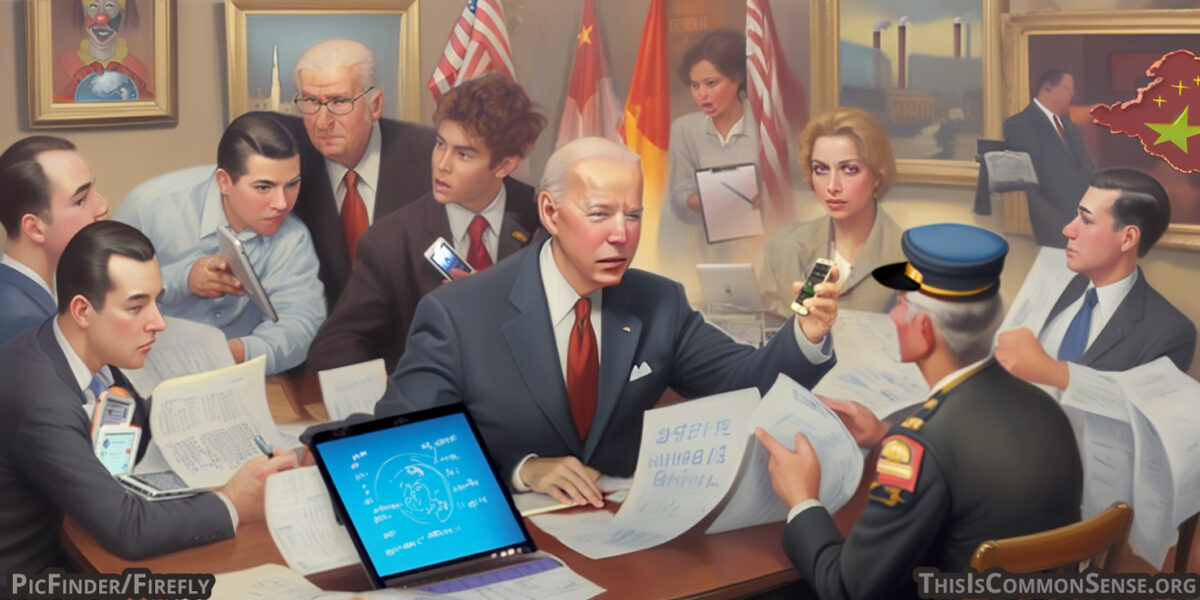The blurb explains the title:
Joe Biden’s new tariffs on Chinese goods mark the decisive rejection of an economic orthodoxy that dominated American policy making for nearly half a century.
Rogé Karma, “Reaganomics Is on Its Last Legs,” The Atlantic, May 18, 2024.
The article explains the bipartisanship of the new economic policy:
On Tuesday, President Joe Biden announced plans to impose steep new tariffs on certain products made in China, including a 100 percent tariff on electric cars. With that, he escalated a policy begun during the Trump administration, and marked the decisive rejection of an economic orthodoxy that had dominated American policy making for nearly half a century. The leaders of both major parties have now turned away from unfettered free trade, a fact that would have been unimaginable less than a decade ago.
And that bipartisan nature is made exceedingly clear:
A president announcing a new policy does not mean that the political consensus has shifted. The proof that we are living in a new era comes instead from the reaction in Washington. Congressional Democrats, many of whom vocally opposed Trump’s tariffs, have been almost universally supportive of the increases, while Republicans have been largely silent about them. Rather than attacking the tariffs, Trump claimed credit for them, telling a crowd in New Jersey that “Biden finally listened to me,” and declaring that he, Trump, would raise tariffs to 200 percent. Most of the criticism from either side of the aisle has come from those arguing that Biden either took too long to raise tariffs or didn’t go far enough.
Mr. Karma explains how this trend is not insignificant, not a blip in the winds of policy change:
The shift on trade is part of a broader realignment that Biden’s national security adviser, Jake Sullivan, has aspirationally called the “new Washington consensus.” What unites Biden’s tariffs with the other core elements of his agenda, including massive investments in manufacturing and increased antitrust enforcement, is the notion that the American government should no longer passively defer to market forces; instead, it should shape markets to achieve politically and socially beneficial goals. This view has taken hold most thoroughly among Democrats, but it is making inroads among Republicans too — especially when it comes to trade.
But this perspective, of how politicians “passively” “deferred” to “market forces,” suggests that active opposition to market forces makes any kind of sense. Truth is, as economist Eugen von Böhm-Bawerk explained, “there is one … thing that not even the most imposing dictate of power will accomplish: It can never effect anything in contradiction to the economic laws of value, price, and distribution; it must always be in conformity with these; it cannot invalidate them; it can merely confirm and fulfill them.” The consequences of policies that seek to use State regulatory powers to guide market outcomes tend not to conform to politicians’ and regulators’ expectations, for at no point do they magically alter the laws of supply and demand.

1 reply on “On Its Last Legs?”
Journalists and pundits often try to create coherent movements by steering incoherent sentiments into a consensus. Sometimes, these efforts enjoy some degree of success.
The Republicans and Democrats advancing various state interventions into the market to-day don’t have some agreed vision — nor respective intra-party visions — of a new technocratic order. Most of these interventions are simply a matter of pandering to this-or-that group of rent-seekers. Some of the protectionist measures arise from concern that the Chinese state is using state-subsidies of exports to undermine the interests of the United States or of America. (Whether tariffs are amongst the appropriate responses is a separable question.)
A real belief in markets never drove policy. Only a tiny share of Republicans have ever understood or genuinely accepted the arguments for the superiority of markets over administrated systems. Reagan’s 1980 coalition was of libertarian conservatives, neo-conservatives, paleo-conservatives, and social conservative, and the libertarian conservatives were driven from his Administration in fairly short order. Paleo-conservatives tend to support tariffs and anti-trust legislation, and social conservatives tend to be economic populists. Neo-conservatives don’t give three cheers for the market, but rather “two cheers for ‘capitalism’”. After Reagan, from 1988 until circa 2010, the Republican Party on the whole adopted a neo-conservative posture; domestically “kinder, gentler” Republicans were all about state intervention, ostensibly tempered by an understanding of incentives on behavior.
When I was a child, we the state-run schools admitted that America had a “mixed” economy. Since that time, for the most part the amount of state intervention in that mix has grown. The political left none-the-less depicts the economic order as if it approaches laissez faire. That bizarre depiction diverts blame for undesirable outcomes from the technocratic interventions, and gives the appearance that the strong theoretic arguments for markets are somehow empirically refuted by those undesirable outcomes.